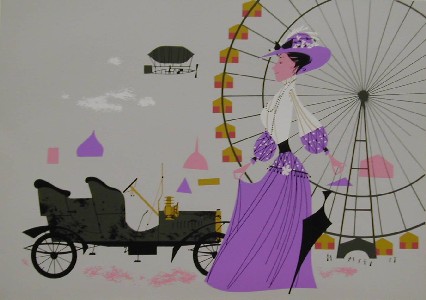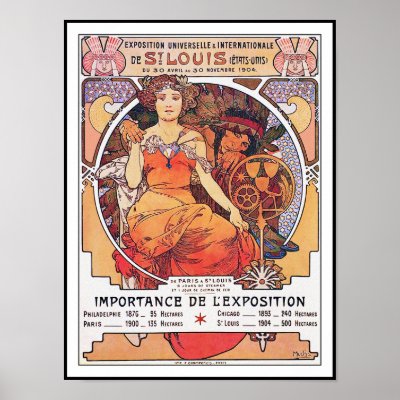

Celebrating the 1803 Louisiana Purchase, the exposition area covered two square miles and included more than two hundred buildings. Both the size and the cost of $19.6 million were double that of the Columbian Exposition ten years before. A major goal of the event was to demonstrate progress, a term many felt was synonymous with the civilization represented by the industrialized Western nations.

Many exhibits focused on technological advancement. Among the scientific displays was the first successful demonstration of wireless telegraphy between the ground and the air in the United States. At heights varying from 1400 feet to 2 miles, messages were received from the ground station. Another first was the meteorological balloon experiments which sent small balloons up to altitudes of 51,000 feet to record temperatures.
An important component of the fair was the Department of Physical Culture which demonstrated the progress made in attaining better health. The underlying goal was to demonstrate the superiority of the Anglo-Saxon "civilized" man over the supposed "primitives" in the rest of the world. This aspect of the fair gained visibility when the 1904 Olympic Games were brought to St. Louis. This third modern Olympiad focused on individual events and athletic club events such as gymnastics and track and field since there were no national teams. Because there were few international competitors, Americans won almost all events.

As in the previous American World's Fairs, the emphasis on the "civilized" verses the "primitive" resulted in its reinforcing racial stereotypes. The so-called anthropological exhibits were arranged to emphasize the superiority of Caucasian accomplishments. The epitome of this view was the Philippines exhibit which included a group of Igorot Tribesmen living in a small reservation on the fairgrounds. They were displayed as savages in need of the civilizing presence of the white man. The "civilizing" force was the American government who had taken over that country, officially at the end of the Spanish-American War in 1899, and in fact after the Philippine-American War of 1899 to 1902. (source: University of Delaware,)
Watch The 1904 St. Louis World's Fair on PBS. See more from OzarksWatch Video Magazine.

No comments:
Post a Comment